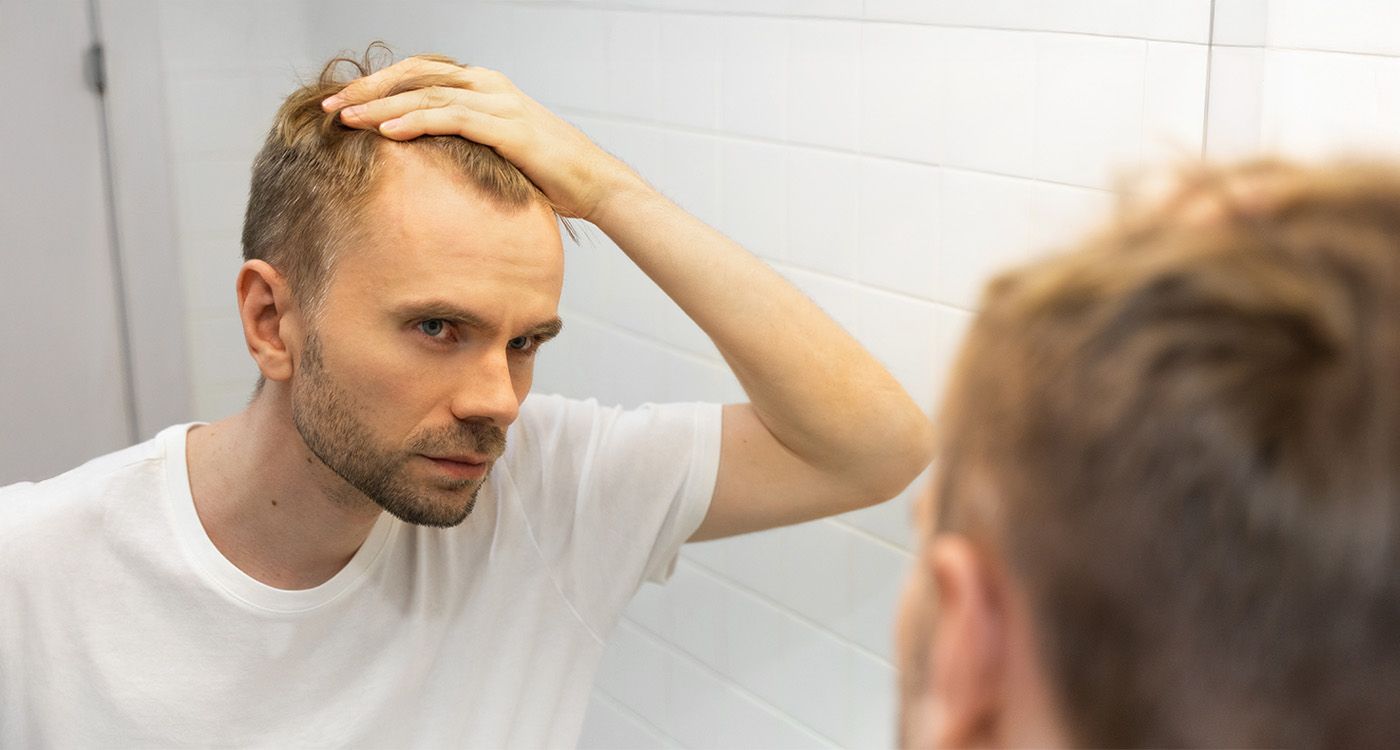
The discovery of SCUBE3, a molecule naturally produced by the scalp, is reshaping baldness research. Identified by Professor Maksim Plikus’s team at the University of California, Irvine, this molecular messenger reactivates dormant hair follicles and stimulates new growth. Early trials have shown very promising results.
A California laboratory at the University of Irvine is revolutionizing dermatology. In 2022, Professor Maksim Plikus’s team isolated a molecule called SCUBE3, short for Signal peptide, CUB domain, EGF-like 3. Naturally produced by the dermal papilla, a tiny cluster of cells at the base of each hair follicle, this molecular messenger has a remarkable ability: it can reactivate hair growth in follicles that had seemingly gone dormant for good.
Until now, treatments for androgenetic alopecia, the most common form of baldness, have only slowed hair loss or created the illusion of fuller hair. Minoxidil, finasteride, and hair transplants do not truly awaken exhausted follicles. By injecting SCUBE3 into mouse skin and human hair grafts, the Irvine researchers triggered rapid hair regrowth, visible to the naked eye after just three weeks in areas that had remained bare for months. Published in Developmental Cell in July 2022, this breakthrough marks the first time a molecular signal has successfully restarted growth in living human tissue.
Remarkably, the effect extends to human follicles. When transplanted onto mice, dormant human follicles came back to life under SCUBE3, producing new hairs. Few prior studies had achieved this without complex genetic manipulation or invasive procedures. Following these results, the team filed a patent and launched the Los Angeles-based startup Amplifica to advance the discovery toward clinical use.
At the heart of the process is the Hedgehog/TGF-β signaling pathway, a critical biological circuit for hair follicle function. SCUBE3, a 110-kilodalton protein, acts as a trigger. When it reaches the dermal papilla, it wakes up dormant stem cells, initiating the anagen, or growth phase. Unlike minoxidil, which enhances blood flow, or finasteride, which blocks DHT, SCUBE3 targets the root of the problem: the follicle itself.
Early Human Trials
The University of California, Irvine, has precisely mapped the genetic sequence of SCUBE3, now patented under US20230251241A1. In September 2023, Amplifica announced the launch of the first phase 1 clinical trials in Los Angeles, involving 50 volunteers aged 18 to 55 with diagnosed hair loss. Participants receive monthly microinjections of SCUBE3 into the scalp over three months. Interim results, expected in early 2025, will determine the next steps in development.
Caution remains essential. Baldness is not simply a matter of sleeping follicles. Inflammatory factors, androgen effects, aging, and oxidative stress all play a role. It is not yet clear whether SCUBE3 will be effective for all forms of alopecia. While no serious side effects were observed in animal studies, long-term safety in humans still needs to be confirmed. The optimal delivery method, whether injections, topical creams, or microneedles, is also under investigation, with Amplifica testing several protocols without yet disclosing the final formulation.
The global patent application, WO2022161179A1, covers both SCUBE3 and its synthetic analogues for use in all types of non-scarring alopecia. Experts estimate the potential market at over eight billion dollars annually, reflecting the high demand for reliable solutions. In France, Inserm reports that one in two men experiences baldness by age 50. Dermatology appointments are surging, and hair transplants cost between €3,000 and €8,000 without guaranteeing lasting results.
What makes SCUBE3 unique is that it directly communicates with the hair follicle without altering the genome or disrupting hormonal balance. The molecule speaks the follicle’s natural language, the signal that decides whether hair awakens or falls out. This likely explains why the California announcement has generated both excitement and cautious skepticism.
The road to commercialization remains long. Phase 2 and 3 trials will need to confirm efficacy across larger populations, with follow-ups lasting 12 to 24 months. If successful, SCUBE3 could become a dermatologically prescribed treatment as early as 2027. For now, it remains an enigmatic name, yet already offers a tangible promise to those whose mornings are shadowed by hair loss.


Comments